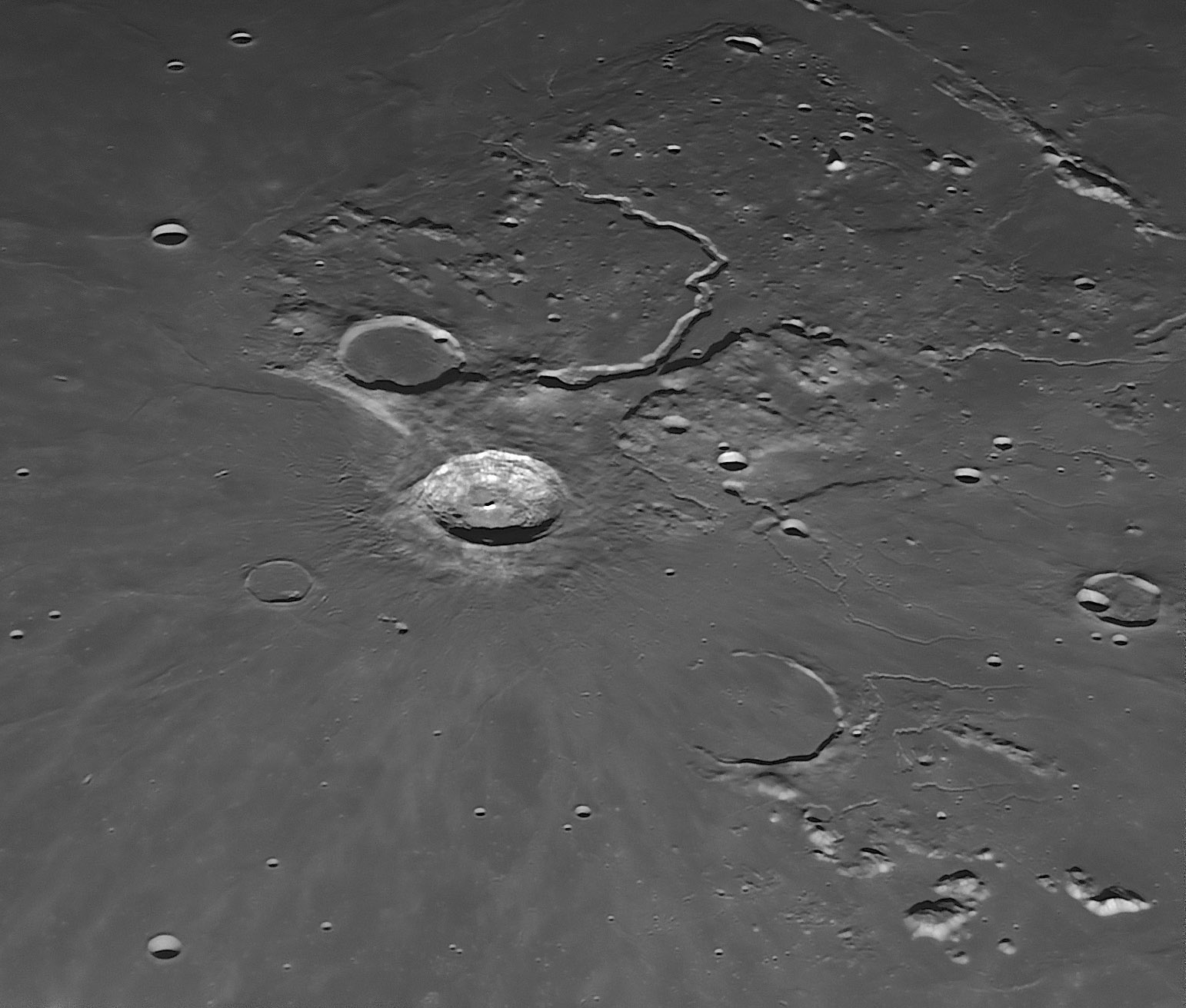Difference between revisions of "January 17, 2014"
| Line 3: | Line 3: | ||
<!-- ws:start:WikiTextHeadingRule:0:<h1> --> | <!-- ws:start:WikiTextHeadingRule:0:<h1> --> | ||
<!-- ws:start:WikiTextLocalImageRule:6:<img src="/file/view/LPOD-Jan17-14.jpg/483390804/LPOD-Jan17-14.jpg" alt="" title="" /> -->[[File:LPOD-Jan17-14.jpg|LPOD-Jan17-14.jpg]]<!-- ws:end:WikiTextLocalImageRule:6 --><br /> | <!-- ws:start:WikiTextLocalImageRule:6:<img src="/file/view/LPOD-Jan17-14.jpg/483390804/LPOD-Jan17-14.jpg" alt="" title="" /> -->[[File:LPOD-Jan17-14.jpg|LPOD-Jan17-14.jpg]]<!-- ws:end:WikiTextLocalImageRule:6 --><br /> | ||
| − | <em>image by [mailto:richard@astrofotografie.nl | + | <em>image by [mailto:richard@astrofotografie.nl Richard Bosman], Netherlands</em><br /> |
<br /> | <br /> | ||
It's so easy to be seduced by the dramatic Aristarchus Crater and Schröter's Valley that other features in this view are often neglected. <br /> | It's so easy to be seduced by the dramatic Aristarchus Crater and Schröter's Valley that other features in this view are often neglected. <br /> | ||
| Line 15: | Line 15: | ||
linear depression - the Alpine Valley. Is it possible that the impact could somehow cause radial uplift as well?<br /> | linear depression - the Alpine Valley. Is it possible that the impact could somehow cause radial uplift as well?<br /> | ||
<br /> | <br /> | ||
| − | <em>[mailto:tychocrater@yahoo.com | + | <em>[mailto:tychocrater@yahoo.com Chuck Wood]</em><br /> |
<br /> | <br /> | ||
<strong>Technical Details</strong><br /> | <strong>Technical Details</strong><br /> | ||
| Line 22: | Line 22: | ||
<strong>Related Links</strong><br /> | <strong>Related Links</strong><br /> | ||
<em>[http://lpod.wikispaces.com/21st+Century+Atlas+of+the+Moon 21st Century Atlas]</em> charts 21 & 28.<br /> | <em>[http://lpod.wikispaces.com/21st+Century+Atlas+of+the+Moon 21st Century Atlas]</em> charts 21 & 28.<br /> | ||
| − | Richard's [http://www.astrofotografie.nl/index.htm | + | Richard's [http://www.astrofotografie.nl/index.htm Astro Fotografie] website<br /> |
<br /> | <br /> | ||
<hr /> | <hr /> | ||
Revision as of 18:14, 11 January 2015
Lining Up

image by Richard Bosman, Netherlands
It's so easy to be seduced by the dramatic Aristarchus Crater and Schröter's Valley that other features in this view are often neglected.
Yet Richard's image immediately screamed out to me, "Look, the southernmost peaks of the Harbinger Mountains are in a straight line
that is nearly aligned with the front of the Aristarchus Plateau!" Most lunar scientists believe that the Aristarchus Plateau was uplifted,
perhaps by part of the mass of lava that erupted as voluminous lava flows from Schröter's Valley, or as large ash deposits from the
Cobra Head. I said previously that the Harbinger Mountains were probably also uplifted by an influx of magma, that here manifested
itself by the magnificent family of Prinz Rilles. But noticing that the Plateau and the Mountains are aligned seems to make stronger the
likelihood that both were uplifted. If you extend a line from Herodotus, through the middle of Aristarchus, pass the south rim of Prinz
and along the Mountain peaks it goes straight to the center of Imbrium. On the other side of Imbrium is a major radial feature that is a
linear depression - the Alpine Valley. Is it possible that the impact could somehow cause radial uplift as well?
Chuck Wood
Technical Details
Jan 13, 2014. C14.
Related Links
21st Century Atlas charts 21 & 28.
Richard's Astro Fotografie website



